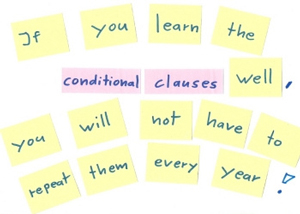
Source: if clauses, Nachiffe Pforzheim, Flickr
Like a phrase, a clause is a group of words within a sentence. Unlike a phrase, a clause contains a subject and a verb. A clause may be independent or dependent. Study the examples in the chart below. The clauses in the nonparallel and parallel examples are in red so that you can clearly see the balance or the lack of balance.
| Nonparallel | Parallel | Explanation |
|---|---|---|
| Alas, art is long, and life doesn’t last long. | Alas, art is long, and life is short. (Benjamin Franklin) | Both of the italicized clauses in the parallel example could stand alone as complete sentences. They are nicely balanced, following a parallel structure of subject (art, life), linking verb (is), and adjective (long, short). Note: Alas is a somewhat old-fashioned word used to express unhappiness or pity. |
| The trainer told the runners that they should get a lot of sleep, that they should load up on carbohydrates, and to do some warm-up exercises before the race. | The trainer told the runners that they should get a lot of sleep, that they should load up on carbohydrates, and that they should do some warm-up exercises before the race. | The nonparallel example lacks a subject in the second part of the sentence. |
In the next exercise, you will find advice for the parents of teenage drivers. For each recommendation, click on the sentence that contains parallel clauses. The choices in this first activity appear in parentheses so that you can identify them easily. Hint: Reading aloud can often help you distinguish between parallel and nonparallel constructions.

Now, it’s your turn to complete the sentences below by clicking on the choice that maintains the parallel structure.

1. Teens are attracted by a car’s style, appearance, and sound system; _____________.
2. Parents may remember their own first cars, which they scrimped and saved to buy or________.
Keep parallel clauses in mind when writing and revising an essay. Doing so will help create rhythm and balance in your writing.